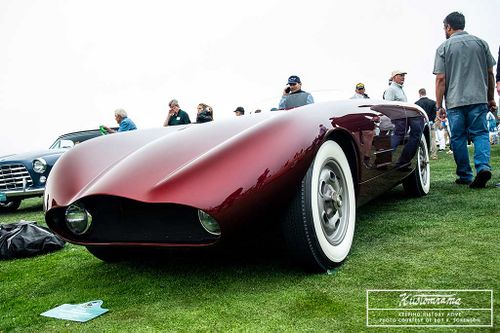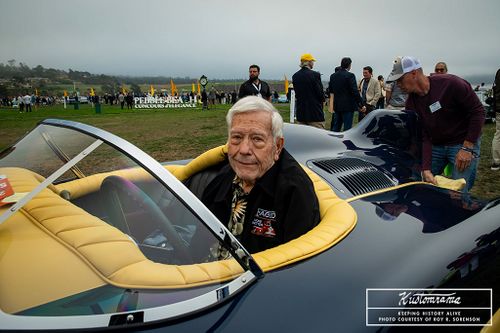American Dream Cars of the 1950s at the 2023 Pebble Beach Concours d'Elegance


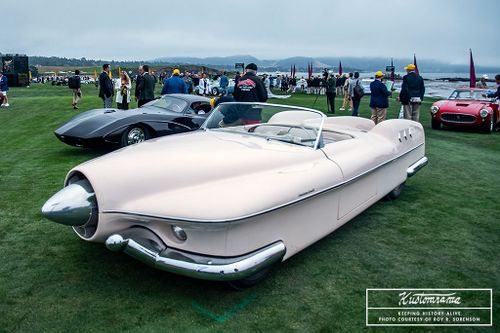
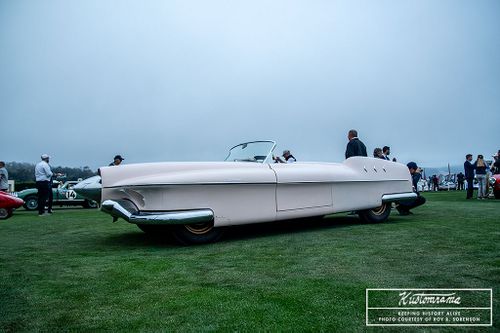
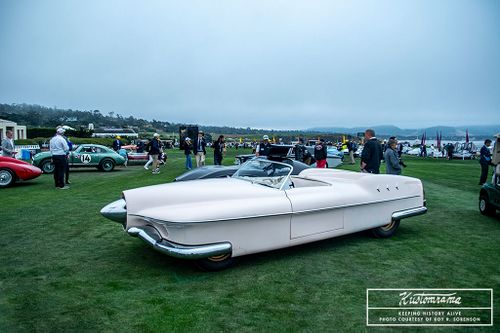
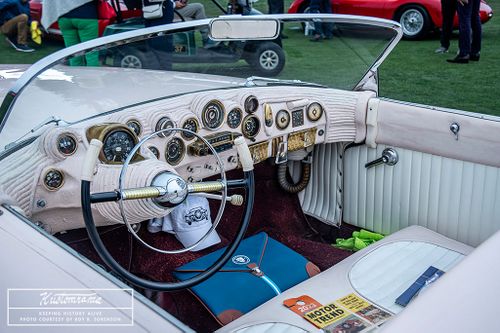
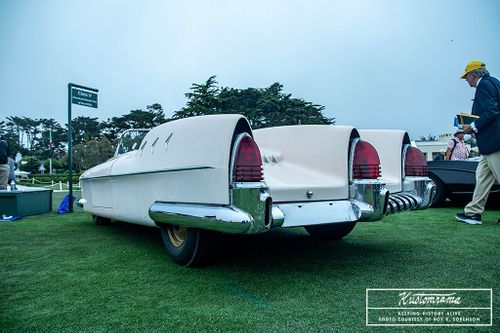





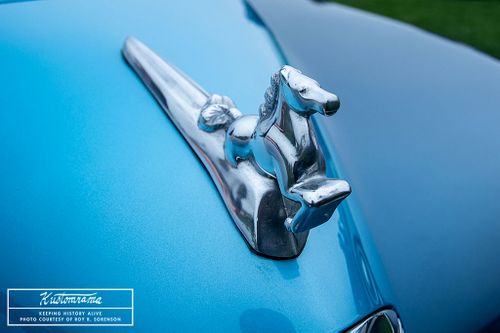
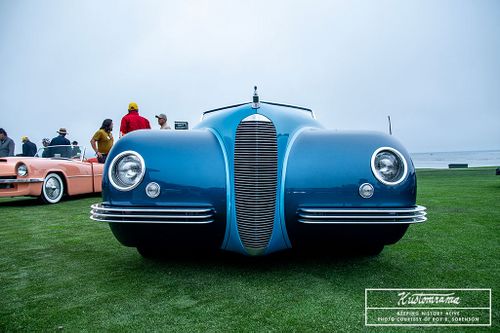
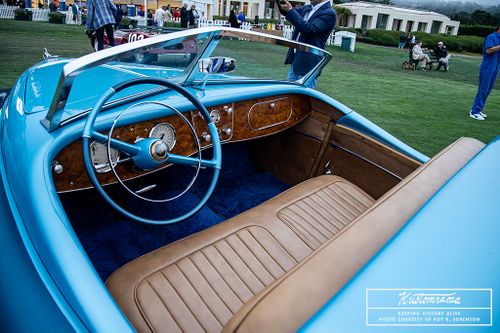



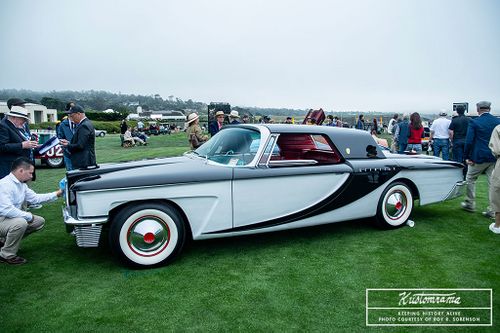


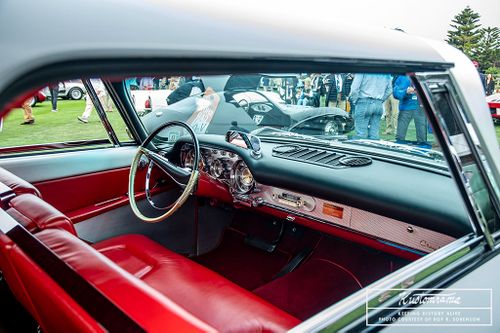

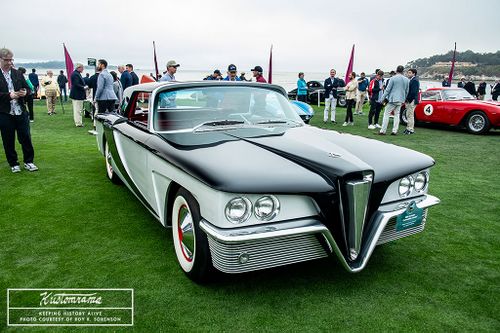
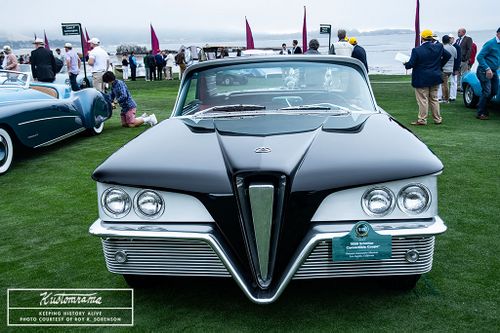

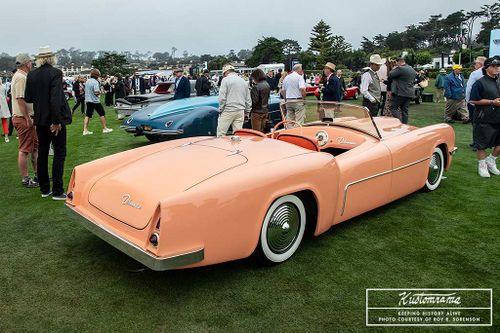
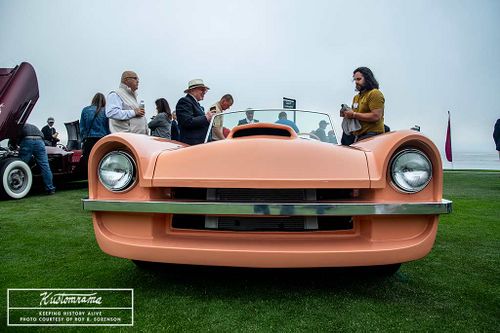

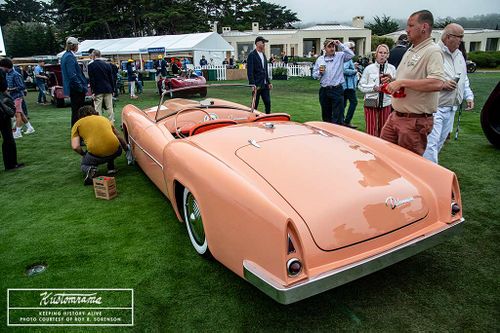


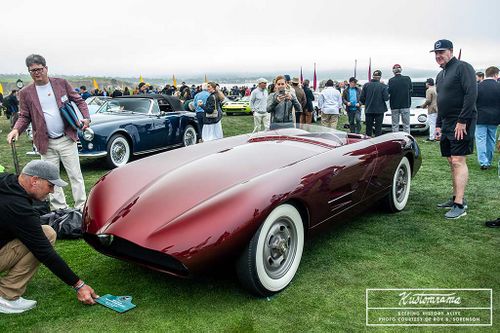
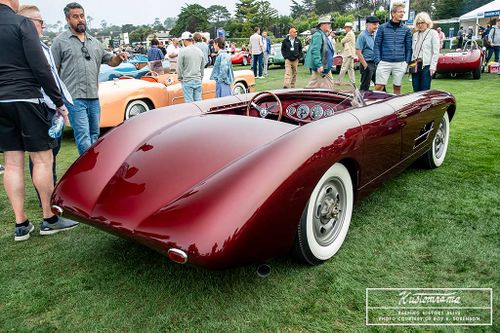
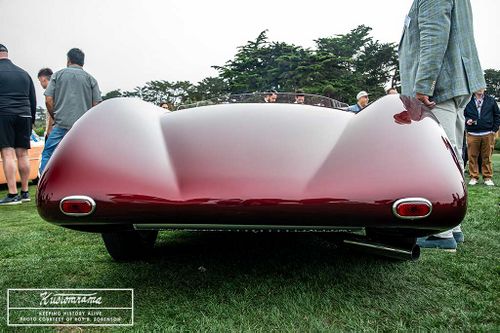

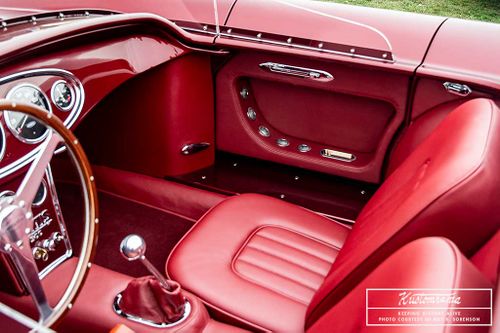



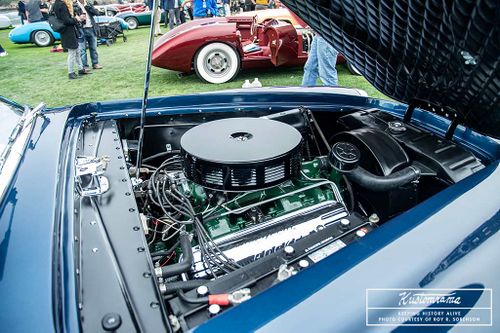
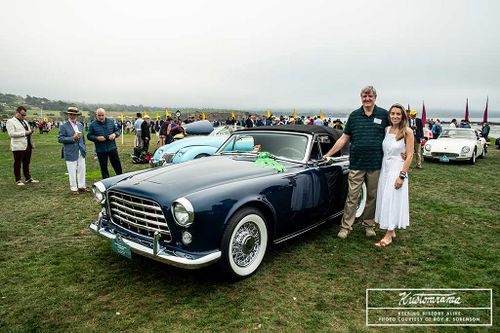

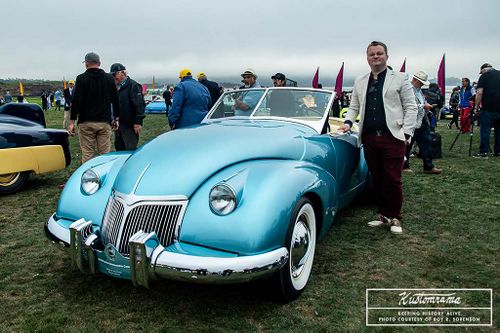
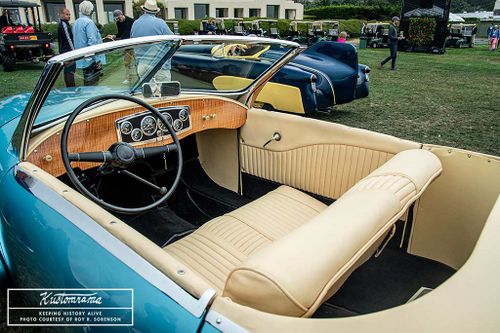
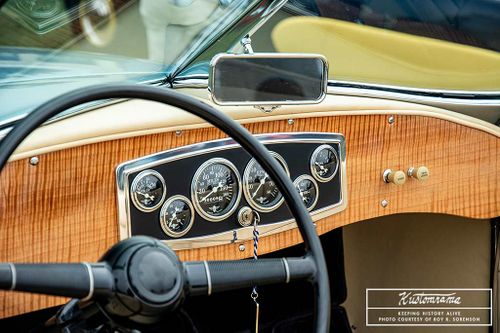
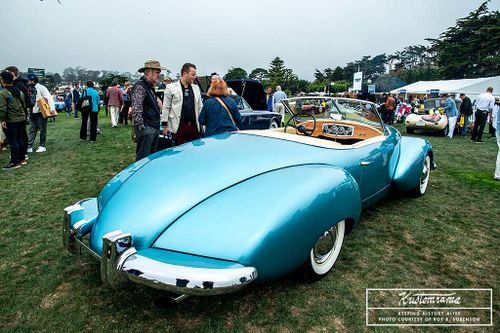
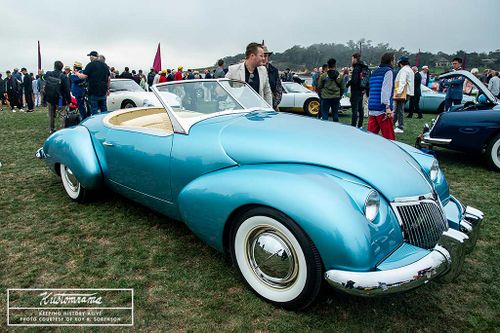

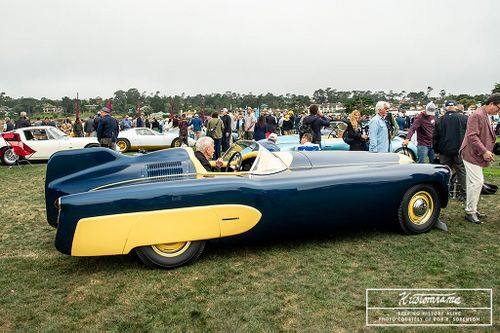
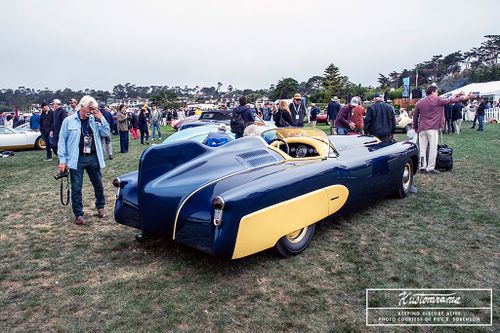
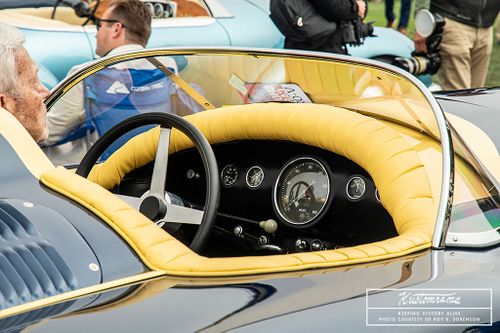
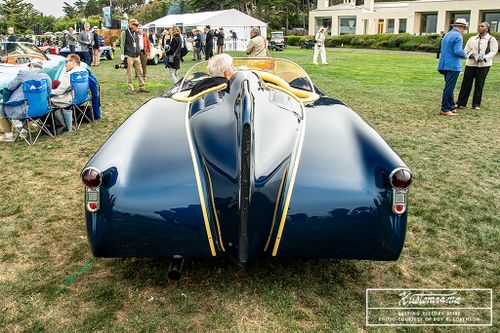
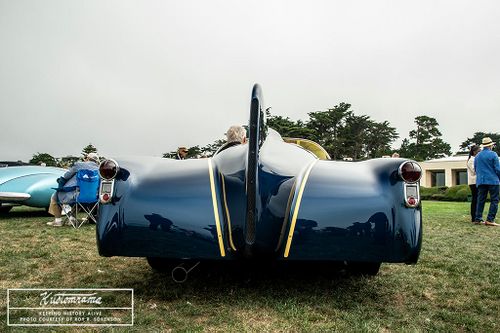
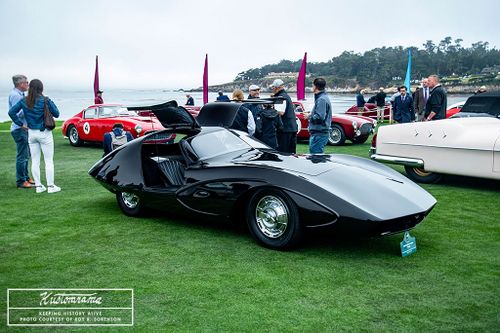
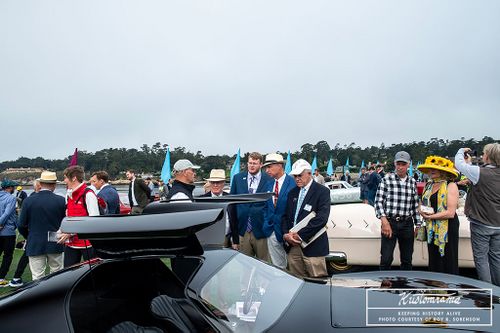
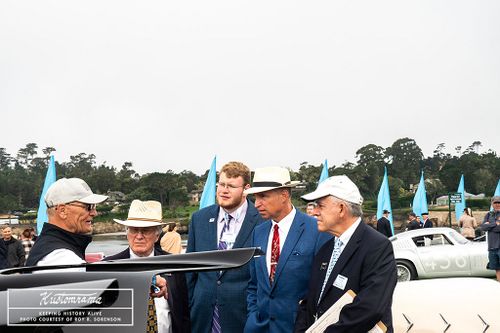

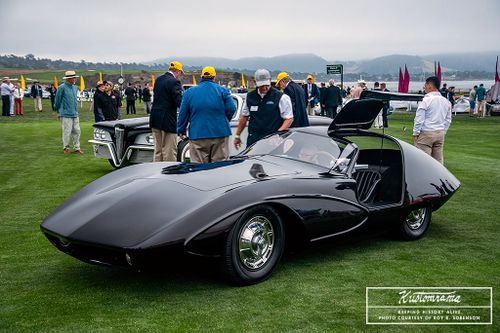

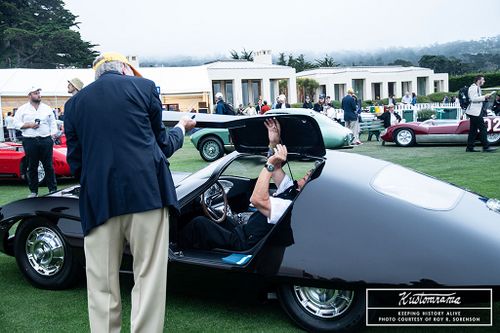
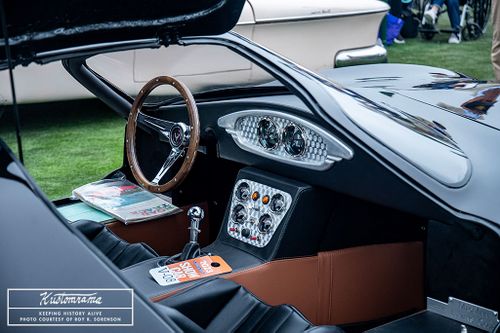

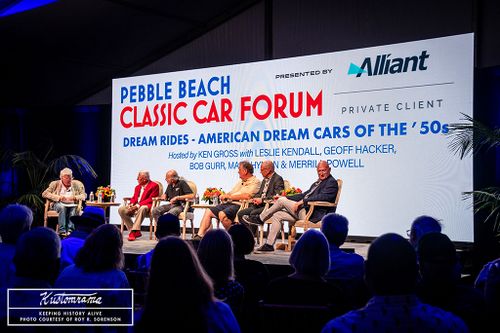
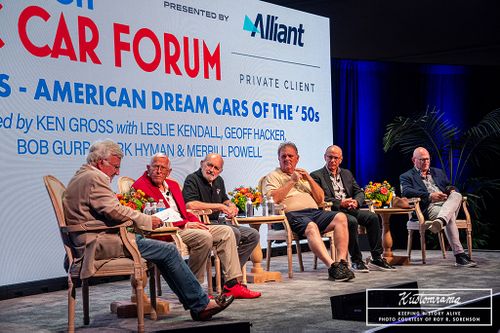
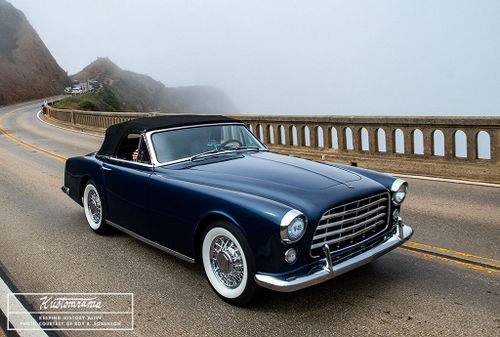

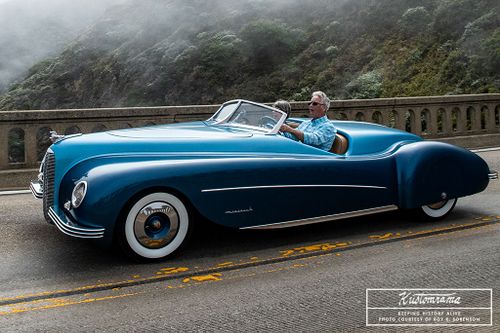
Featured Events - Pebble Beach Concours d'Elegance
Photos & Text By Roy R. Sorenson
Each year, I look forward to Pebble Beach Concours d’Elegance posting their new classes. I can always find at least one class that will spark my interest. This year was no exception. I quickly spotted "American Dream Cars of the 1950s" on their list. This class celebrates one-off and very limited production cars conceived and built by some remarkable individuals whose stories are often as interesting as their cars. This isn’t about big corporations with their big buck concept cars being unveiled in hotel ballrooms or the World Fair. No, these were cars that people designed and built in their own garage or in a local restoration shop.
As servicemen came back from the wars, they used the skills they had learned to build hot rods. Not only learning to form sheet metal and aluminum during World War II, fiberglass was developed as a replacement for the molded plywood used in aircraft radomes (fiberglass being transparent to microwaves and protecting the radar arrays from weather). Its first main civilian application was for building boats and sports car bodies, where it gained acceptance in the 1950s. Southern California Builders quickly learned the advantages of building lightweight bodies at a reasonable cost. Soon, many of them were turning out, do it yourself kit cars, everything from swoopy sports cars to dune buggies. Plus, I seem to remember someone called “Big Daddy” who built cars from fiberglass.
So when this class popped up at Pebble Beach, I knew I had to be there to check out these rare art pieces. The first car to catch my eye was the 1951 Manta Ray Roadster owned by Don Lacer from Junction City, Kansas. Inspired by the General Motors LeSabre Motorama car, and obviously a fighter jet of the era, the car remains largely original. The fiberglass body with its slipper flow and THREE tail fins has NOT been restored! The jet-inspired nose cone is very intimidating when you look at it head on! Built by Glen Hire and Vernon Antoine of North American Aviation, it was featured on the July 1953 cover of Motor Trend magazine. Powered by a Studebaker V8 (and not a turbine engine), it is a one-off creation! It took home third in class.
I talked for a long time with car owner Tom Chandler (from Elkader, Iowa) about his 1953 Maverick Sportster. With its Jaguar-esque fadeaway fenders and wide, flat boattail, it’s definitely not your typical sports car. Designer and entrepreneur H. Sterling Gladwin called his car the “Land-based Pegasus.” The car is over sixteen feet long but so well-proportioned it still has that sports car feel. When its current owner bought the car, he said it was in terrible shape. It took the retired school teacher seven years in his home garage to restore the car. Tom said he did everything but the paint. His arm wasn’t strong enough to hold the paint gun for the sixteen-foot-long passes on each side of the car!
The Petersen Museum brought the 1959 Scimitar Convertible Coupe. At first glance, the black and silver convertible looks like it might be an Edsel, but there’s nothing Ford about this car. Famed industrial designer penned the original illustration for this car, and Reutter Coach Works of Stuttgart, Germany, built its ALL ALUMINUM body on a Chrysler New Yorker chassis. Olin Aluminum Company commissioned the car to showcase the advantages of alloy bodies. It was launched at the 1959 Geneva International Auto Show. Today, aluminum is used throughout modern cars.
The 1955 Debonnaire Convertible definitely stood out as one of the most colorful cars in the class. Owned by Paul Sable and Jim Thorpe (from Pennsylvania), it was originally designed by Phillip Egan, who was on the early design team for the famous Tucker. The car was built on a 1949 Ford chassis, powered by a Lincoln Continental V8, with Independent front suspension. Only six of these convertibles were believed to have been built by Val deOlloqui, president of Replac, a major fiberglass company. Again, they wanted to show how fiberglass could be used to build car bodies.
Out of all the cars, the 1953 Kurtis Sorrell SR-100 Roadster screamed modern-day hot rod! Owned by Mark and Newie Brinker (from Houston, Texas), the sleek, low, and lean convertible featured an aluminum body by California Metal Shaping and master craftsman Bob Sorrell. Appropriately, the SR-100 was unveiled at the 1953 Petersen Motorama. The car is built on a 1953 Kurtis Indy Car chassis and is powered by a 302 straight six with a Howard 12 port head and six carbs! A few of these were made with fiberglass bodies, but this one is aluminum. The car is done in an amazing Brandywine metallic, features Halibrand racing wheels, and an interior that would fit right into a modern-day street rod. The car took first place in class.
The Briggs Cunningham Trophy, (donated in 1978 by Briggs Cunningham himself, is awarded to the most exciting open car present), and second place in class, went to the 1954 Edwards America Convertible owned by Gary and Cathy Edwards (of Houston, Texas). The car was designed by race car engineer Norman Timbs and built by Sterling Edwards. The car features a Henry J chassis, an Oldsmobile Rocket V8, and a fiberglass body. This is No. 1 of five cars produced. (The current owners are unrelated to Sterling Edwards.)
The 1947 Kurtis-Omohundro Comet featured an aluminum body by Comet Industries. The car is built on a Mercury chassis, has a Cadillac V8, and an automatic transmission. The car debuted on a full-page spread in the February 1949 issue of Road & Track magazine. It then appeared in the December 1949 issue of Popular Mechanics magazine as the “New Breed of Sports Cars.” Britain’s Autocar magazine featured the car as well. Lost for over fifty years, it was found by the Undiscovered Classics team and subsequently restored. Today, it's owned by Wayne and Amy Gould of Tucson, Arizona.
To me, the car that could be the poster car for the class was the Fageol Pataray! It just screams ‘50s Dream Car to me! Mark and Newie Brinker from Houston, Texas, own the 1952 Fageol Pataray Roadster. The one-off roadster was on the cover of Mechanic Illustrated. It was adapted from the radical Fageoul Coupe and had a modified 300HP Fageol bus engine. Ray's parents built off-shore racing boats so this car kind of combines the off-shore boat with the ‘50s jet plane look. It might also explain why it has a fiberglass hull, ahhh, I mean, body. It was amazing talking to the man who originally built the car. He was very proud of the fact that the car's first public appearance in over two decades was at Pebble Beach.
I’ll let the Pebble Beach program describe this last car..."1958 MacMinn Le Mans Coupe Dennis and Karen Kazmerowski, John Fudge and Shannon Fudge, Califon, New Jersey. Famed designer, beloved ArtCenter College of Design instructor, and long-time Pebble Beach Concours Chief Honorary Judge Strother MacMinn penned the sleek 1958 Le Mans Coupe, and his friend John Bond, the engineer/editor of Road & Track, was the engineer. Mac wanted to create a car that could compete at Le Mans and still be streetable. The Corvette V8-powered car starred on the cover of Road & Track in August 1960 and was featured in Mac's book "Sports Cars of the Future." Writing in Sports Car Guide magazine, Robert Cumberford called it "The most exciting sports car design constructed in the USA in years" — and people still mistake it for new today. Just five were built."
Class V: American Dream Cars of the 1950s
Did you enjoy this article?
Kustomrama is an encyclopedia dedicated to preserve, share and protect traditional hot rod and custom car history from all over the world.
- Help us keep history alive. For as little as 2.99 USD a month you can become a monthly supporter. Click here to learn more.
- Subscribe to our free newsletter and receive regular updates and stories from Kustomrama.
- Do you know someone who would enjoy this article? Click here to forward it.
Can you help us make this article better?
Please get in touch with us at mail@kustomrama.com if you have additional information or photos to share about American Dream Cars of the 1950s at the 2023 Pebble Beach Concours d'Elegance.
This article was made possible by:
SunTec Auto Glass - Auto Glass Services on Vintage and Classic Cars
Finding a replacement windshield, back or side glass can be a difficult task when restoring your vintage or custom classic car. It doesn't have to be though now with auto glass specialist companies like www.suntecautoglass.com. They can source OEM or OEM-equivalent glass for older makes/models; which will ensure a proper fit every time. Check them out for more details!
Do you want to see your company here? Click here for more info about how you can advertise your business on Kustomrama.
